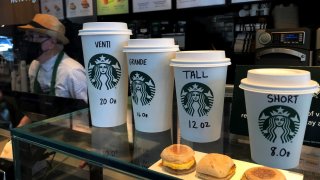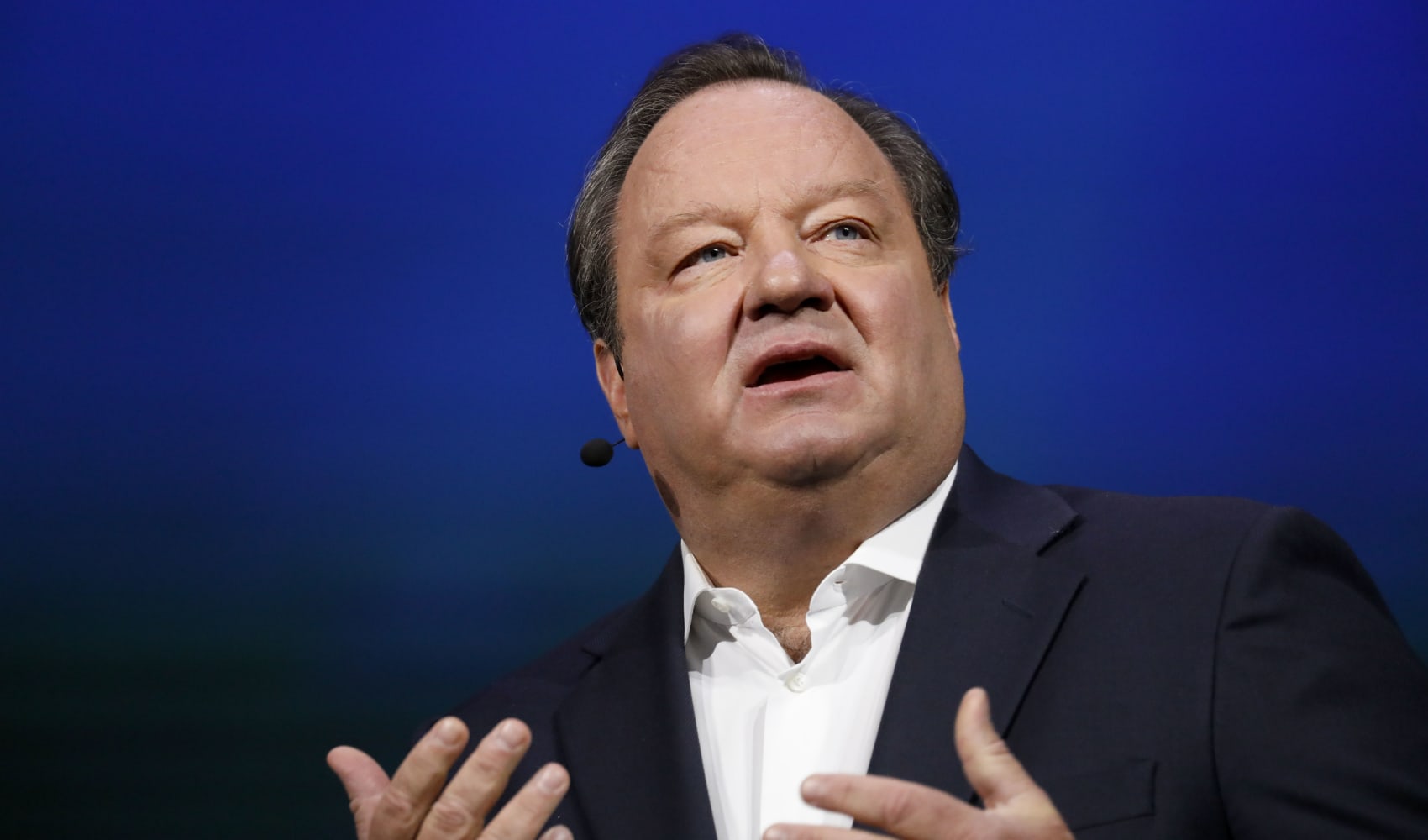
- Starbucks said Thursday it plans to add about 17,000 locations by 2030 and to cut costs by $3 billion.
- The announcement marks the latest stage in the company's broader "reinvention" strategy, which was laid out by former CEO Howard Schultz.
- Starbucks beat Wall Street's estimates for both its quarterly earnings and revenue, sending shares up 9.5%.
Starbucks on Thursday presented the latest stage in its plan to drive growth for the company, which involves accelerating its global footprint and saving $3 billion in costs over the next three years.
The company said it plans to expand to 35,000 locations outside of North America by 2030. Starbucks currently has roughly 20,200 international cafes, as of Oct. 1. In total, the coffee giant aims to reach 55,000 locations globally by 2030, up from its current count of more than 38,000.
"Three out of every four new stores over the near term is expected to be opened outside of the U.S. as our store portfolio becomes increasingly global," Michael Conway, president of Starbucks' international and channel development divisions, said during a company presentation.
Get Connecticut local news, weather forecasts and entertainment stories to your inbox. Sign up for NBC Connecticut newsletters.
Starbucks also announced a $3 billion cost-savings plan. Executives said $1 billion of those savings will come from making its stores more efficient. The rest will come from saving on its cost of goods sold.
The final piece of what Starbucks called its "Triple Shot Reinvention Strategy," announced Thursday, calls for wage increases for baristas, doubling their hourly income over fiscal 2020 earnings by the end of fiscal 2025. That jump will come from both increased hours and higher pay. Starbucks said it would share more details next week.
The announcement comes after more than 350 Starbucks locations have unionized under Workers United, according to National Labor Relations Board data. Starbucks and the union have not yet reached a collective bargaining agreement at any of those locations, and both the union and the NLRB have accused Starbucks of breaking federal labor law, including illegally withholding wage hikes at union stores. The company denies all allegations of union busting.
Money Report
Momentum brewing
Earlier Thursday, the company reported its fiscal fourth-quarter results. Starbucks beat Wall Street's estimates for both its quarterly earnings and revenue, sending shares up 9.5%. The stock move reversed shares' losses earlier this year, giving the company a market cap of $115 billion, as of Thursday's close.
During the company's conference call, CEO Laxman Narasimhan said the company's "reinvention" plan unveiled last September is moving ahead of schedule, driving both sales and efficiency for Starbucks. For example, the chain's new single-cup drip coffee brewer is now installed in more than 600 locations.
More broadly, that plan takes aim at many of the issues plaguing Starbucks and baristas in recent years. Drink orders have grown more complicated and time intensive as cold beverages become more popular and Starbucks pushes pricey add-ons such as cold foam. Customers have also shifted to ordering their drinks through the company's mobile app and drive-thru lanes and expect their orders to arrive more quickly. Under that pressure, baristas have struggled to maintain speedy service and quality customer experience.
Former Starbucks CEO Howard Schultz unveiled the reinvention plan to simplify operations and improve both quality and speed of service more than a year ago. The strategy involves new coffee-making equipment and store formats plus more automation.
Schultz, then back at the company for a third stint in the top job, said Starbucks had made "self-induced mistakes" and lost its way. He stepped down from the role in March, handing the reins over to Narasimhan, a newcomer to the company who pledged to enact the plan.
At its investor day last September, Starbucks projected earnings per share growth of 15% to 20% annually over the next three years and annual same-store sales growth of 7% to 9%. The company's same-store sales outlook of 5% to 7% for fiscal 2024 falls short of that range, but the rest of its forecast for the next fiscal year meets those targets.
Don't miss these stories from CNBC PRO:
- Bank of America's investment strategist says the S&P 500 correction could last until it hits this level
- A 'panic spike' is possible late October into November, says Bank of America's chart analyst
- The S&P 500 has entered a correction. Here's why Warren Buffett likely thinks that's good news
- Morgan Stanley auto analyst Jonas says investors are 'waking up' to idea that Ford, GM are not a way to play EV boom






